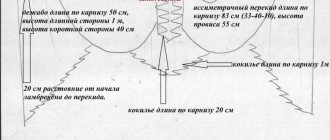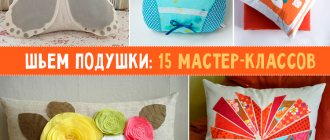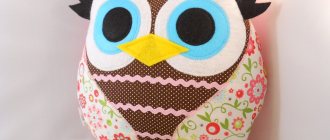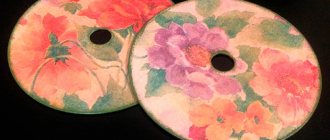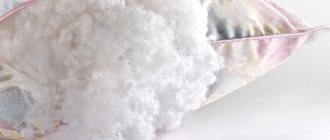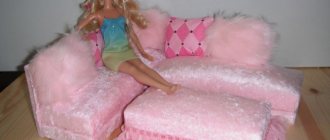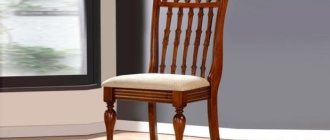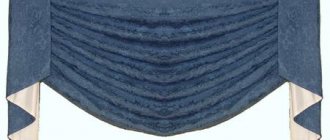Home textiles are used to create a harmonious interior, giving the overall composition bright and stylish accents. It will not be difficult for a home craftsman to sew curtains or curtains on his own, but for this it is important to understand the sewing technology and choose an interesting and original idea.
Beautiful curtains for the kitchen or for the nursery, living room and even bedroom will become a real decoration of the room and will perform a practical function. Such products are used not only as decoration for window openings, but also provide measured penetration of natural light into the room.
Factors to consider
Coping with the task of sewing and decorating is not difficult. What is important here is simple adherence to the rules given in the article, the ability to cut and work with a sewing machine.
But before choosing fabric, taking measurements and sewing, you need to decide on style, color and other aspects that affect the overall appearance of the room in the future.
There are a number of rules that should not be neglected. Here is a list of recommendations, taking into account which you can avoid mistakes.
- It's no secret that using a color palette you can achieve the visual effect of reducing or expanding space. Dark colors will visually reduce the volume of the room, and light colors will, accordingly, increase it.
- It is recommended to choose fabric for curtains that is darker or lighter than the main color of the walls. Otherwise they will merge.
- The presence of a horizontal pattern on the fabric can also expand the space, and a vertical pattern can make the ceilings high.
- When choosing fabric, it is worth considering that some types require certain care. For example, natural silk and velvet do not “like” washing; only hand cleaning is allowed. For fabrics prone to fading in the sun, a lining is required.
- Heavy fabrics decorate the interior, but require the installation of a reinforced cornice, as they are heavy.
- Curtains made of linen with lavsan are good for kitchens; the shimmer of the fabric will add an impression of lightness.
DIY tulle
Before you pick up a sewing machine, you need to decide what exactly you would like to see on your window. First you need to select the fabric. The most common materials:
- Voile is a very soft matte fabric that is not very transparent.
- Kisey is a plain weave fabric. Can be decorated with beads or other decor.
- Organza is a classic dense fabric, transparent and shiny.
- Mesh - can be small, medium or large, usually has decoration as an interweaving of colored or metallized threads.
The choice of fabric depends on the design, idea of the room and its purpose. For example, a veil will look great in the bedroom, mesh is appropriate in the kitchen, and organza is universal and will look good in any room.
The choice of fabric usually depends on the shape of the tulle:
- Tulle, tightened with curtain tape or braid. This curtain is characterized by delicate and neat folds.
- Tulle on eyelets. A great option if you want to get bright and expressive folds. It looks very beautiful and interesting due to the transparency of the fabric.
- Looped tulle is a fabric that is attached to the curtain with massive loops. It looks organic if the tulle is long and massive.
- Tulle with a lambrequin is the easiest option for combining several colors or textures. This option is not popular among designers.
Having decided on the room in which you will sew tulle, you need to carefully analyze your design, select the fabric and style based on its functionality and aesthetic compatibility. The easiest option is to sew tulle for the kitchen with your own hands.
Width
This calculation includes taking into account the following characteristics:
- Cornice lengths;
- Number of fabric gathers (coefficient);
- Seam allowances.
The working length of the load-bearing part of the cornice, protruding approximately fifteen centimeters from the window opening, is multiplied by the assembly factor.
To correctly calculate drapery, it is necessary to take into account the density of the material. Thin fabric will allow for more folds. Chiffon curtains or voile curtains allow a coefficient in the range of 2-4, for thick curtain fabrics - no more than 1.5-2.0.
Correct cutting of the canvas
Before sewing tulle, great attention must be paid to cutting the fabric, which cannot be done in the usual way, since the edge will be uneven and may begin to “creep”. To do this, use one of 4 methods, namely:
- along the ironed fold, the exact location of which is determined by measuring equal distances along the entire length of the canvas using a measuring tape or tape measure. Then, following these marks, the fabric is folded and ironed. Cutting is done from the inside using a sharp knife;
- along the trace of the thread, which is pulled out of the fabric, having previously made a small incision in the required place. When these actions are performed correctly, a noticeable mark remains on the material, along which the fabric is cut with scissors;
- arshin and scissors. To do this, the fabric is spread out on a flat surface and with the help of an arshin (a flat long wooden strip), many points are marked on the fabric using a marker. By removing the arshin, a line of dots will remain on the fabric along the entire length of the fabric. It is necessary to cut along it;
- arshin and cutter. In this case, a protective element in the form of a piece of plywood is placed under the fabric, laid out on a flat surface, the arshin is placed on the tulle, pressed and the cutting is performed with a cutter.
When using an iron, to achieve an even cut on tulle, it is necessary to use a thin soft cloth between the soleplate of the device and the material. Otherwise, the material can easily be damaged - burned or left with yellow spots.
Patterns and sewing instructions for basic models
Before you start sewing, you need to find or create a product template yourself, which includes a sketch, pattern and the necessary material. The resulting dimensions are marked on the pattern.
Don't be afraid, templates made yourself are not inferior to store-bought ones if the measurements of the window and cornices are made correctly.
When deciding on a design, it is worth considering the organic combination with the overall style of the room. To create models of varying complexity, it is proposed to consider patterns of the most commonly used options.
Loops
Wide short stripes are made from the same or additional contrasting fabric, which are sewn in the form of loops evenly along the upper edge of the curtain. The loops can be either stitched or fastened with large decorative buttons sewn to the curtain. Another option would be to tie a loop into a bow.
Tulle
Most window design models include the use of tulle. That is why this option is being considered first.
Required material
In this case you will need:
- A piece of thin translucent fabric;
- Special tape;
- Colored threads.
Instructions
- In this case, the width of the fabric should correspond to twice the width of the window. The length consists of the sum of the desired length of the curtain, ten centimeters for the hem at the bottom and three centimeters for the hem and processing with tape at the top.
- The process is so simple that there is no need for a pattern. Using a ruler or measuring tape, points are marked on the laid out material according to preliminary measurements and connected to each other. The workpiece is cut along the resulting lines. For convenience and space saving, the fabric can be folded in half.
- The upper part of the curtain should be folded inward by half a centimeter, smoothing it with an iron. Next, you need to once again bend the edge of the fabric inward by two centimeters, securing it with safety pins or ironing it again. Thus, this will take five centimeters of fabric. Now you need to make a neat stitch along the edge of the hem at the bottom.
- Next you have to complete a slightly more difficult task: sew on the ribbon. The main goal is to avoid the stitching on the drawstring cord. The ribbon is sewn to the fabric at the top and bottom. If the width of the tape is more than five centimeters, it is necessary to stitch it in the middle.
- At this stage, the edges of the product are processed on the sides and bottom. From the left and right edges, you first need to bend the material by five millimeters and iron it with an iron, then fold it again by 7-10 millimeters and carefully stitch along the edge. When processing the lower edge, five millimeters of fabric are also folded for the first time, and then another 2-3 centimeters are stitched.
- The finished product must be ironed, slightly stretching the seams.
You can hang curtains by pulling out the drawcord on both sides, thus adjusting the number of folds. Finally, the lace is secured by tying and the excess is cut off.
Decorating curtains
In addition to the fact that you can sew curtains yourself using a machine, you also need to further decorate them by making some kind of trim or print with your own hands. This will diversify the appearance of the curtains and complement the interior. Of course, if you are a supporter of classics and minimalism, then it is better to do without pronounced decorations. But, if decor is required, then it is quite possible to transform tulle with the help of bows, ruffles, lace and other details.
Tulle can include voile, gauze, veil, organza, chiffon. In order to make an accent when decorating windows, professional stylists often choose tulle and main curtains in contrasting shades.
For example, curtains can be played up by gathering them on one or both sides. To do this, you can either come up with additional fastenings on both sides of the window or simply use a beautiful ribbon to match the tulle to assemble them. If you need to decorate the curtains in a children's room, you can play with the design with children's elements, toys, by assembling the curtains and attaching them to special fasteners.
When decorating curtains, stylists use textile bows, various ruffles, braid, lacing, silver and gold threads, lurex, and beautiful embroidery.
Decorating with flowers is quite popular. This adds special lightness, charm and sophistication to the interior.
In stores you can purchase a variety of magnetic pickups that do not require additional fastenings.
The upper part of the canvas is treated with braid, which will create a beautiful drapery.
Curtain classics
The classic is perhaps the easiest to execute and consists of straight-cut curtains combined with tulle.
The sewing process is almost identical to the previous version.
- It is advisable that the width of the fabric corresponds to twice the width of the window. In the case of cutting and sewing one curtain, you can use the instructions from the section on tulle curtains. If there is a need to create two curtains, then it should be taken into account that the width of each must match the width of the window opening, which will provide the required size and number of gathers.
- The marking on the surface of the spread out material is done as in the previous version, it is simply then cut lengthwise into two parts.
- Next, the seams are processed, the tape is sewn, but all this is done twice.
Sewing process
When the fabric is selected and the style is determined, it is necessary to make calculations to buy the required yardage of fabric. It is necessary to measure the width of the window opening and add to it the sum of the side distances. The resulting number is multiplied by 2 in order to get beautiful folds. The distance from the top (eaves) to the floor, or more precisely to the required distance, will help determine the length of the future tulle. Always allow about 3cm for seam allowances. All measurements must be made with a tailor's metal ruler or soft meter.
You may also be interested in: Making a cornice for a Roman blind with your own hands
A short master class on how to sew tulle correctly:
- The fabric is carefully laid out on the floor and cut.
- Excess edges must be trimmed.
- Fold the remaining allowances and sew with an even and small seam.
- A ribbon for the curtain is sewn onto the upper edge of the tulle, from the wrong side. This is done only if the choice fell on tulle, which is tightened with a similar ribbon.
Detailed video on sewing tulle on curtain tape:
Roman curtain
This model will require the most accurate measurement of the window opening, since the curtain must completely cover it. Although, the tailoring itself is not complex and does not require a pattern.
You will need:
- Cornice for this model;
- A piece of thick fabric;
- Colored threads.
Instructions
- Markings are made on thick, non-slip fabric in accordance with the dimensions of the window and connected with lines. The result is a drawing of a curtain.
- Twelve centimeters of overlap and five centimeters on the sides are added to the bottom line on the pattern.
- The folds are ironed and stitched.
- The curtain is placed on a specific device.
Fabric selection
The many types of fabrics make choosing a little difficult. Therefore, before sewing, it is better to understand their differences and features. Depending on your preference, you can choose a smooth fabric or prefer a patterned version with a pattern. An important role is played by the color and raw materials used in production.
Currently, the buyer has the opportunity to choose from the following types:
- Organza holds its shape well. The fabric is light and transparent. The base is polyester. The more expensive model contains viscose or silk. Insufficient air permeability;
- The “mesh” has good light transmission. It is dense with large holes. Synthetics. An excellent option for the kitchen;
- Thin, lightweight threads of muslin wash well, dry quickly and provide free passage for air. Made from natural fibers of wool, linen or cotton;
- The most popular type is the veil. Cotton, linen or wool threads provide lightness and the desired shape. For the hall this is the best option. This type is not recommended in the kitchen because it fades quickly and collects dust and dirt well;
- Subtlety and weightlessness are characteristic of “gas”. The base is silk. In rare cases - synthetics.
You can make tulle from any type according to your taste. You just need to use the sewing recommendations correctly.
Instructions
- At the initial stage, you need to decide on the length, width and number of lamellas. Standard values are from 89 to 127 millimeters.
- In accordance with the specified parameters, the lamellas are cut out, seam allowances are made and cut out.
- Each strip is folded lengthwise so that the front side is on the inside. Then it needs to be stitched along the edge and turned inside out.
- It is advisable to steam the resulting lamella.
- By putting them on the guides, you need to give proper order to the blinds system.
Decorating a room, especially a residential one, plays an important role. The design of window openings is of particular importance. How nice it is to look out the windows during the rain, being inside and feeling protected. Windows attract attention from the outside, which is why people tend to decorate them.
The modern goods market is replete with factory products from a huge number of manufacturers. However, curtains made by yourself can make a room not only beautiful and cozy, but also bring into it the warmth of love and special care.
Don't be afraid to take on this type of needlework. As you can see from the article, this is not difficult at all. Therefore, using the above guide, you can create comfort and beauty for every taste.
Stylish component
When the technology for sewing curtains is determined and the fabric is selected, the question of aesthetics arises. Everyone wants home to be a place where it is always cozy and comfortable. It is textiles, in particular curtains, that add coziness to any room. So which ones should you choose?
If the interior is saturated with bright colors, you should pay attention to colored curtains that will complement the existing design. You can take a color that is already present in the interior, but choose a softer and more pastel shade. Remember that any shades differ in warmth, and a cooler shade of a color already present in the interior will look inharmonious. When choosing colored tulle and bright curtains, you need to focus on filling the room with light. In a bright room, colored tulle looks vibrant and bright, but if there is little sun, it will seem heavy and dark.
You may also be interested in: How to sew a curtain from beads with your own hands - video instructions
The most classic option in the style of minimalism is white organza fabric. You can choose curtains of any color to match it. But don’t think that choosing white organza is easy. It can also be cool white, ivory or pearlescent. Each shade will look different and suit completely different interiors. You should not try to combine several shades of white; this task is extremely difficult, and not even every professional designer will be able to choose the combination correctly.
Whatever fabric you choose, whatever color and style you choose, now you can sew tulle with your own hands.
Save
Photos of curtain patterns
Eyelets
Curtains with eyelets look very modern, but installing the rings requires a special tool; at home it is quite difficult to achieve high quality workmanship.
Difficulties in cutting yourself
The self-cutting master class is conducted without basic knowledge, since there are not many difficulties.
- When placing the pattern, pin it in place so that the fabric does not move.
- Soap is not visible on all fabrics; they are used to trace the pattern, so washable felt-tip pens or chalk are used.
- They forget about allowances; they are needed so that the length of the product does not shorten.
- Use tracing paper; it is better to pin it to the material.
- Before cutting the main one, it is better to make a sketch on unnecessary fabric to make sure that you sew everything correctly.
Useful tips for beginners
- To ensure an even stitch, attach tracing paper with seam markings and stitch directly across the paper.
- If you use bias tape for the side seam, then use clips like clothespins - they will help you avoid the fabric shifting.
- Don't forget to use the sewing machine to secure the seam so that it doesn't fall apart.
- Remove any unnecessary threads from the seams to keep the garment looking neat.
- If the seam is crooked, it’s better to rip it open and do it again, don’t be lazy.
- Use accurate calculations, with cm allowances marked.
- Don't forget to steam iron your curtains.

